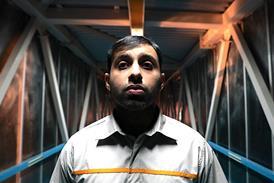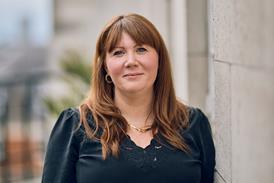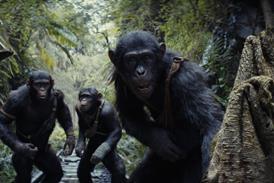After numerous false starts, the plans for a film and TV studio in Scotland are now back on the agenda. And the word is, it’s more likely than ever to actually happen.
With plans for a studio facility in Scotland dating back to the 1940s, it is no wonder the latest round of discussions have been treated with a fair degree of scepticism.
After all, if Sean Connery and Sony couldn’t get a studio off the ground in the early 2000s then what hope does this particular campaign have?
And yet, those involved — Scottish Enterprise, Scottish Development International, Creative Scotland and British Film Commission chair (and producer) Iain Smith — seem quietly confident.
So what makes this time different?
Smith points to the introduction of the UK’s high end TV tax credit — and the expected influx of big international TV shoots into the UK on the back of it — as being a key factor.
“For the first time, with the high end TV tax relief there is a commercial underpinning to the need,” says Smi,th who highlights Scotland’s “big missed opportunity” to host HBO’s Game Of Thrones – which has shot all three of its series in Belfast, Northern Ireland – because of its lack of studio space.
“They did want to locate in Scotland but couldn’t make the production work because of a lack of sizeable shooting space. The evidence of that missed opportunity is now clear. Northern Ireland is flourishing and Scotland is still in the shadows.”
New signs of strength
Still, Scotland received a major boost this week in the form of confirmation that Sony’s TV drama Outlander – based on the fantasy romance novels by Diana Gabaldon - will shoot at a pop up studio in the Isola building in Cumbernauld, half an hour outside Glasgow.
The location is unlikely to be the home of any permanent studio, due to lack of expansion opportunities, but it is nevertheless both an indication of an appetite to shoot in Scotland and an example of exactly the kind of long running project that the country is hoping to attract, alongside one off international productions such as World War Z [pictured] and Cloud Atlas, which shot in Scotland last year.
Although the challenge will be to attract Sony back for potential second and third series of Outlander, especially as only Gabaldon’s first novel in the series is actually set in Scotland.
The studio discussions this time round have also been boosted by a clear political will, with Scotland’s culture secretary Fiona Hyslop responding to the “appetite for a large scale film studio in Scotland” by setting up a Strategic Delivery Group (the first time such a group has been established) which is actively pursuing proposals and investors.
At the same time, public sector body Scottish Enterprise (which has a remit is to to grow the economy of the country in key sectors) and its offshoot Scottish Development International (which promotes export and international trade) has commissioned a feasibility study looking into issues such as demand, analysis of specification, possible locations, operating models and funding sources.
“It’s more likely today than it’s ever been in the past,” says Scottish Enterprise’s David Jack who is heading up the feasibility study. “If it doesn’t progress it is not for want of trying, it is simply because we can’t make a business case for it.”
“Before we didn’t have models. Now we have Northern Ireland and Game Of Thrones and Cardiff and Da Vinci’s Demons. They’ve got it, we still have to prove it,” says Brodie Pringle, Locations Manager at Creative Scotland, which has ringfenced £1m to help get the studio project off the ground.
The last feasibility study in 2010 may have concluded that a studio was “not a priority for the sector” but since then, the UK has seen a marked rise in the number of international productions wanting to shoot here and UK studios such as Pinewood, are, by their own admission, beginning to reach full capacity.
“My principal reason for raising the level of debate is that I never want to see the UK turning away productions. Scotland is a big blank on the map and I don’t want to see team UK fail,” says Smith, adding: “Scotland has a production cluster and crews second only to the South East and yet it doesn’t have that one key ingredient.”
Where the permanent studio would be is still up for deliberation, with Glasgow and Edinburgh rumoured to be involved in lively debates as to which city is up for the job.
“The evidence is that it should be in the Glasgow area because there is the biggest density of crew around Glasgow,” says Jack, who points to other factors such as good transport links, access to an international airport and to locations.
Meanwhile, following a workshop held in February with 30 members of the industry, the suggestion is that the studio should house a minimum of two 20,000-square-foot stages, plus a backlot, storage, paint shops, and most importantly – room for expansion.
“We need to plan for success rather than failure. If one production comes in you want to be able to build more stages. You need a facility capable of coping with every different type of production,” says Smith.
Next steps
Other details still to be ironed out are whether the studio will be built from scratch or a conversion of an existing site and who will be brought in to operate it.
Previously, Glasgow based production outfit Film City was tipped as a favourite, and, says Jack, they have “not been excluded”.
“Our preference would be for this to be private sector led,” says Jack. “We are looking for the right partner, and we may potentially have a bids process. But if a major operator came along, that doesn’t have capacity, that would be our preferred way of work.”
Still, it’s not a done deal. There are more cost exercises to be carried out and more justification needed for the economic impact as well as weighing up the need to protect Scotland’s indigenous industry against encouraging inward investment.
Jack is reluctant to cite Belfast’s The Paint Hall as a solid business model. “I think there is a lot of good learning from Northern Ireland. But there is a high dependency on Game Of Thrones; if it was to walk away I don’t know what they’d be left with. It’s a highly risky business.”
Meanwhile, Pringle points to the danger of “building a facility that doesn’t get used. That’s one of the reasons for the feasibility study”.
Still all the parties believe that to get the studio off the ground, they need to act fast.
Looming next year is the referendum on Scottish Independence. While Culture Secretary Hyslop on Monday set out to reassure the industry that an independent Scotland “would have full control over tax powers and the opportunity to offer additional incentives to enhance the competitive edge of our creative industries on the international stage”, there are nevertheless likely to be wider implications.
“The Scottish film industry benefits from being part of the UK film package, so it’s something we’ve got to be aware of. And we don’t know how long the TV tax credit will last, so we need to strike now,” says Pringle.
“As a producer, I’m a great believer in caution but it has to be paired with adventure and the spirit of what can be achieved,” adds Smith. “We have to make a leap of faith, but hopefully it will be a small leap, not a big one.”






















No comments yet